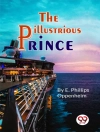In ‘Sarrasine, ‘ Honoré de Balzac expertly weaves a tale that explores themes of obsession, identity, and the complexities of authenticity within societal expectations. Set against the backdrop of 19th-century Paris, the novella delves into the life of the fictional sculptor, Sarrasine, whose passionate infatuation with a beautiful woman leads to tragic consequences. Balzac’s masterful prose is characterized by rich descriptions and psychological depth, reflecting the distinct literary style of realism that captures the intricacies of human emotion and social dynamics, while also critiquing the prevailing romantic ideals of his time. Honoré de Balzac, a towering figure in French literature, is best known for his extensive series of interconnected novels, collectively titled ‘La Comédie Humaine.’ His own experiences as a writer navigating the challenging literary and social landscape of post-Napoleonic France profoundly influenced his work. Balzac’s keen observations of society and his fascination with the themes of class and ambition are vividly encapsulated in ‘Sarrasine, ‘ enriching the narrative with philosophical underpinnings and societal critique. This novella is highly recommended for readers interested in psychological depth and social critique within a historical context. Balzac’s nuanced exploration of the human psyche, woven with themes of love and artistic aspiration, makes ‘Sarrasine’ a timeless study of the dichotomy between reality and illusion, essential for anyone looking to deepen their understanding of 19th-century literature.
About the author
Honoré de Balzac (1799–1850) was a French novelist and playwright whose literary output stands as a monumental contribution to European literature, particularly within the genre known as realism. Known for his keen observation and depiction of the intricacies of post-Napoleonic French society, Balzac’s extensive body of work includes the collection of interlinked novels and stories titled ‘La Comédie Humaine.’ In this magnum opus, he sought to document the varieties of French society in a way that parallels Dante’s exploration of the spiritual realms. His narrative style is characterized by meticulous detail and represents multifaceted characters embroiled in complex moral dilemmas. A particular novella that exemplifies Balzac’s art of characterization and his exploration of themes such as identity, passion, and the nature of artistry is ‘Sarrasine’ (1830). This narrative of an ill-fated love affair between a French sculptor and an Italian opera singer unravels layers of deception and gender ambiguity and is often studied for its treatment of these themes within the broader context of 19th-century social mores. Balzac’s influence extends beyond his lifetime, with his work informing the techniques of later literary giants such as Émile Zola, Charles Dickens, and Marcel Proust, making him a pivotal figure in the transition from traditional storytelling to the novel format that dominates modern literary fiction.












